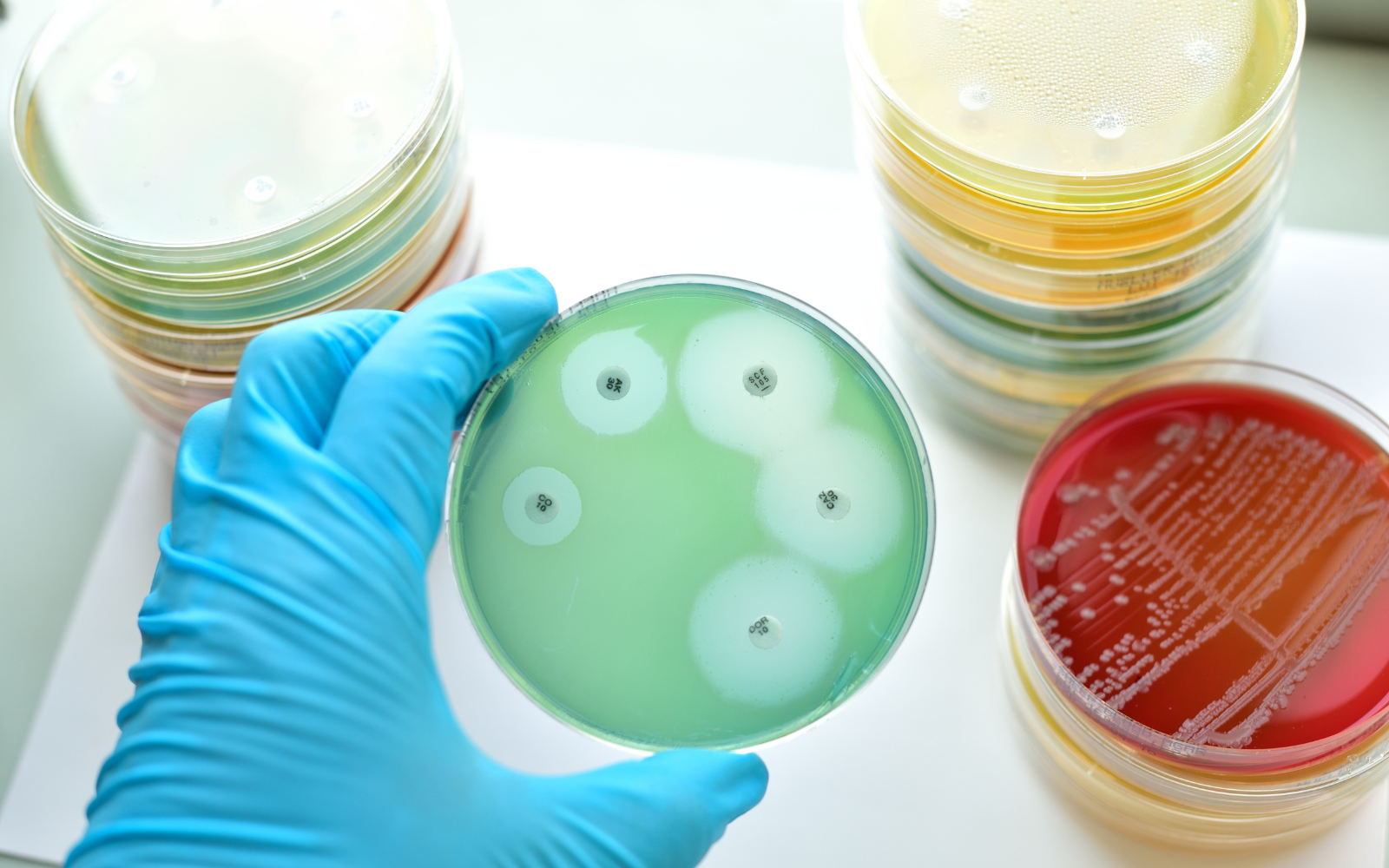This is the third article is our series examining how developing and evaluating laboratory guidelines and advice for the appropriate prescription of antibiotic treatments is being led by scientific research at Awanui Labs.
In the latest stage of research to support best use of antibiotics, a team of microbiologists developed a protocol called ‘exception-reporting,’ as another way laboratories can reduce unnecessary prescriptions for patients.
“Our earlier work showed wound swab cultures are probably causing a lot of unnecessary antibiotic use,” says Awanui Microbiologist Dr Max Bloomfield whose team includes Koen van der Werff, Sue Todd, Marjel Bocacao, Hamish Reid, Michelle Balm, and Tim Blackmore.
“A key theme from our research is these sample types will often grow bacteria, even in patients who do not have an infection requiring antibiotics. The problem is when requestors see the laboratory has grown bacteria, they often start the patient on antibiotics, even when they do not have clear symptoms or signs of an infection.”
Changing the reporting procedure in the lab
In response to these findings, Awanui Labs changed the reporting procedure at the Wellington Regional Hospital laboratory in March 2023, and moved to a process known as exception-reporting.
Under this approach, the laboratory will test for all types of bacteria but only report on those organisms which are resistant to flucloxacillin and cefalexin, which are the recommended antibiotics for GPs to use for skin and soft tissue infection from a wound. If no resistant bacteria are grown, the test result tells the referrer this was the case with the test.
“Patients who are already on a course of antibiotics when they provided a wound sample are not included in the exception-reporting, so our focus is supporting prescribers to not start patients on a new course just because we have reported bacteria on the sample,” says Max.
In this latest phase of the study, the team analysed patient wound culture swab results from October 2021 to December 2023. These results were then split into patients who had not been given antibiotics at the time of result reporting, those who were prescribed on the day of the wound swab collection, or where sampling subsequently occurred during treatment.
Max says this was done with the aim of understanding the effectiveness of exception-reporting on post-report antibiotic initiation when antibiotics are started within five days after the wound swab result is reported.
Exception reporting – another way to reduce antibiotic use
The study examined wound swab culture reports for 1,819 patients in the PRAI group before Awanui moved to exception-reporting, and another 764 processed after the change had been made.
The analysis found after the reporting change, over 53 percent of all patients wound culture swabs met the criteria and were exception-reported. These patients tended to be younger, with an average age of 43 years against almost 48 years for the pre-change group, and a higher proportion of them identified as Māori and Pasifika.
The study showed an almost 50 percent reduction in patients being dispensed antibiotics after their wound swabs had been reported with the exception-reporting protocol, compared to swabs reported using the standard methods.
“Only 25 percent of patients in the exception-reporting group were prescribed antibiotics within the five-day period after receiving their report. This compares with almost 50 percent of patients with swabs reported using standard methods,” says Max.
“The benefits of exception-reporting lasted out to 30 days post-report, with 37.8 percent in exception-reporting being dispensed an antibiotic, compared to 59.7 percent pre-change and 59.4 percent of all swabs processed using standard reporting. Importantly, we also did not see any increase in hospital admissions due to reduced antibiotic use with exception-reporting as well.”
Max says the latest research has shown how this alternative approach to reporting positive wound swab cultures has resulted in a substantial reduction in post-report antibiotic initiation.
“The move to exception-reporting has helped to increase the quality of reporting by Awanui Labs, and by changing how we do things, we can achieve better guidance and management of antibiotic treatments for referrers.
“There is an opportunity to test if these findings can be replicated in other laboratories outside of Wellington, and through wider use of exception-reporting, clinical microbiology laboratories can have a significant impact on stewardship and reduce unnecessary antibiotic prescribing in many patients across the country,” says Max.
To read the full article on the Journal of Clinical Microbiology – click here
